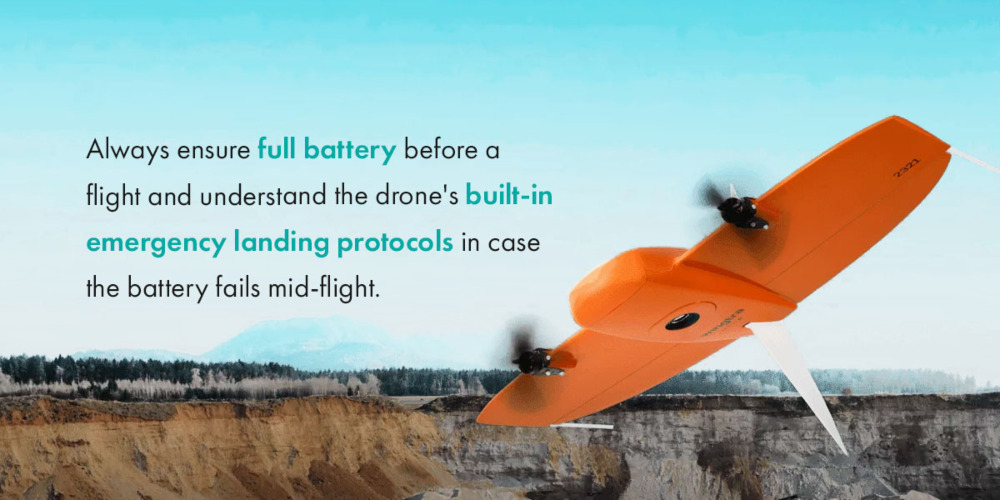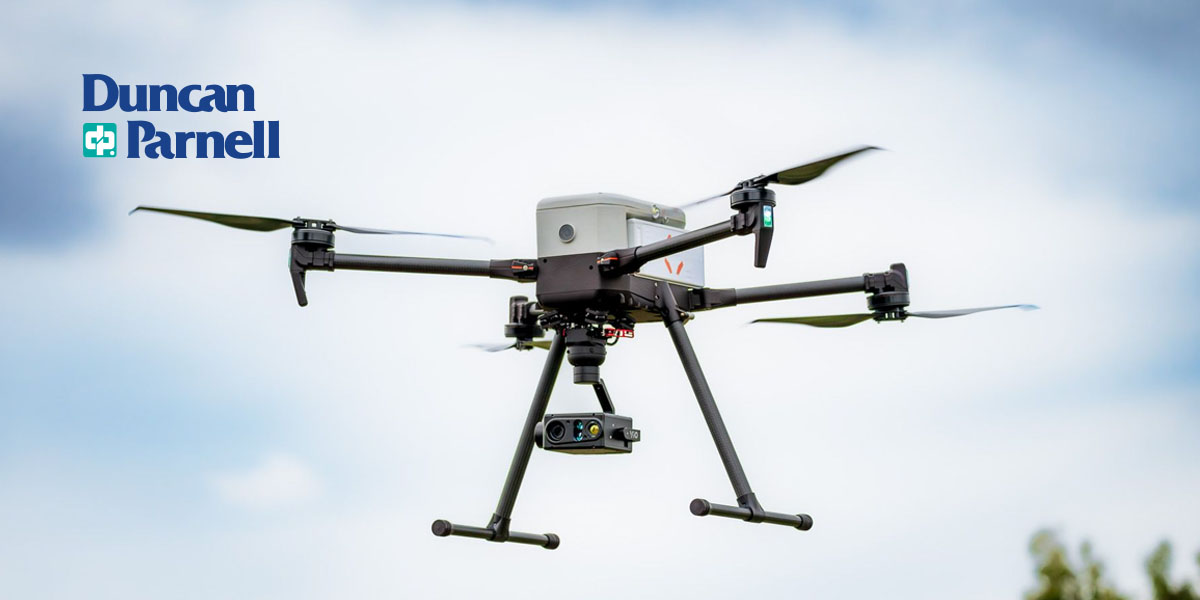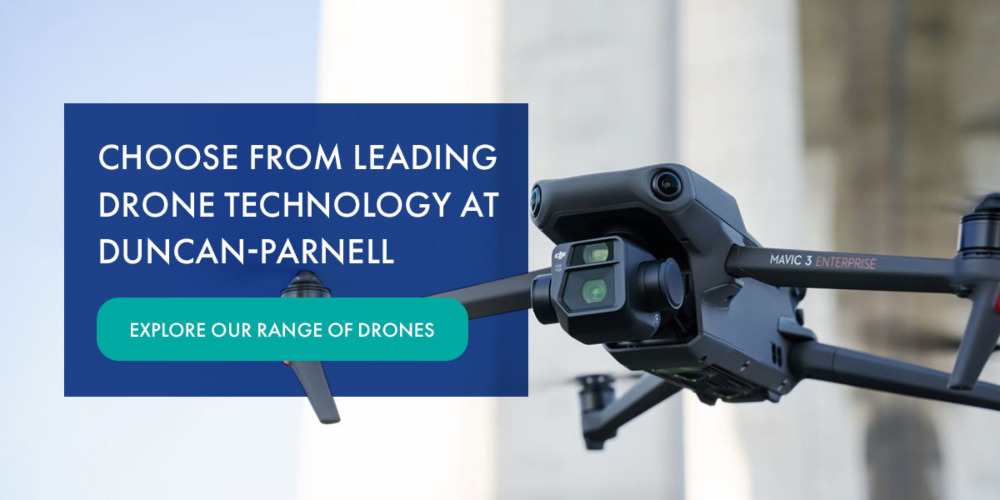Drone Safety Best Practices
Across many industries, drones help businesses navigate tasks like inspecting, surveying, and monitoring construction progress. These devices provide a snapshot of areas to inform decision-making processes and have the power to streamline your operations. However, following drone safety guidelines and best practices is necessary for using drones successfully.
Drone Registration and Regulations
Before operating a drone for commercial purposes in the United States, you must become certified as a remote pilot by the United States Federal Aviation Administration (FAA) according to the Part 107 – Small Unmanned Aircraft Systems regulations. This process involves taking and passing a knowledge test. Then, you can register your drone with the FAA.
Currently, Part 107 details various actions you can and cannot take with your drone, and some are subject to waiver based on your operations. Examples include keeping the drone within the operator’s visual line of sight and flying the drone at or below 400 feet in uncontrolled airspace. If your work with the drone requires you to operate it in a way that would violate certain Part 107 rules, you can apply for an official waiver document from the FAA.
It is important to fully understand and adhere to FAA and local law enforcement regulations regarding drone flight to ensure compliance. If your industry requires advanced drone operations, you may need to go beyond Part 107 training and receive additional approval. Be sure to do your research and take the right steps for your specific applications so you can operate your drone safely and lawfully.
Drone Flight Controls and Maneuvers
Before flying a drone, you or the operator must understand its basic controls and maneuvers to help ensure a safe flight. Basic flight maneuvers and controls, like hovering, taking off, landing, and flying the drone straight, are important to grasp before learning advanced moves. These are several basic steps you can use to promote a smooth takeoff and landing:
- When taking off, be mindful of your surroundings while keeping a safe distance from people and objects.
- Check that the drone is flat and there are no obstacles around the propellers before taking off.
- Open folded props to their flight position.
- Check that the props are secure and free from damage.
- Turn on remote controller and drone.
- Wait for the drone and remote control to connect.
- Check battery levels on the drone and remote controller.
- Call out a warning to others nearby that you are arming the drone and preparing to take off.
- Make sure all props are rotating and free from vibration before initiating takeoff.
- Check that the airspace is clear.
- Call out a warning to others nearby that you are launching the drone.
- When landing, ensure you have a flat and clear space to land on.
- Call out a warning to others nearby that you are landing the drone.
- Operate the controls to initiate a landing.
Practicing drone flights before you implement them in your daily operations can be a helpful approach.
Implementing Effective Emergency Protocols
In some cases, you may encounter challenges when operating the drone. Having an emergency plan in place can help you quickly navigate issues that arise. Here are certain problems you might face and how you can counter them:
- Spatial awareness and visual contact: You might lose sight of drones due to lighting conditions and obstructions. Visual contact issues will increase the risk of accidents or unintended airspace intrusions. If you can no longer see a drone when operating it, you should attempt to guide it back to you. Put together a plan for operators to consult should they lose the drone.
- Navigational errors: Entering restricted airspace because of navigational errors creates safety risks and legal ramifications. Always know exactly where you are flying the drone. A protocol listing where you can and cannot fly in your specific area is helpful.
- Distance and altitude misjudgments: In populated or urban areas, it is easy to misjudge the drone's proximity to obstacles, leading to collisions. Take time to understand the drone's altitude characteristics so you can guide it safely.

- Battery life and power management: Understand the drone's battery health limitations to avoid unexpected battery drain, failure, or loss of control mid-flight. Always ensure full battery before a flight and understand the drone's built-in emergency landing protocols in case the battery fails mid-flight.
- GPS reliability: When GPS glitches occur, they can misguide a drone, leading to incorrect flight paths and positioning. Having reliable GPS and backup navigation options is vital to keep your drone flight on track and productive.
Enhancing Skills Through Operational Training
Part of safe drone operations is having the necessary training. While every commercial drone operator must have an FAA drone pilot certificate, additional operation training is important to support continued knowledge. For example, you might offer your team continued training on basic flight control, emergency response, advanced navigational techniques, and scenario-based simulations, allowing you to prepare for unexpected situations.
Drone Battery Life and Maintenance
Maintaining your drone can help you ensure it operates safely. Like any other technological device you use for your operations, your drone will require continual care to remain functional. If you have multiple operators on your team, you should work together to create a maintenance plan everyone understands and follows.
Namely, your drone will require software and firmware updates over time. Regularly check the manufacturer's website for software instructions and updates for your specific model. Always back up your drone's data and settings before applying firmware and software updates, so you can protect your data.
A drone's battery affects its performance, so you will also want to protect and maintain the battery as much as possible.
- Use a battery and battery charger directly from the manufacturer — alternate options can deplete battery performance faster.
- If the battery temperature rises when charging, allow it to return to an acceptable internal temperature before continuing.
- Charge the drone in a well-ventilated area to avoid significant temperature changes that could impact the battery's health.
Store your extra drone batteries in well-ventilated areas away from heat sources and direct sunlight. When storing the drone itself, remove its batteries so they do not get wet. Before storing the drone, avoid recharging it to 100%, as doing so compromises the performance of lithium-ion batteries. Battery maintenance and storage requirements vary by manufacturer so make sure you understand and follow your specific manufacturer’s procedures to avoid irreparable damage to your batteries.
The Impact of Weather on Drone Operation and Safety
Certain weather conditions like heavy rain, strong winds, and intense heat can affect a drone's electronic systems, causing malfunctions. Additionally, drone operators must maintain clear visibility when flying, and poor weather conditions can limit visibility.
Before taking off, go through comprehensive pre-flight checks and have contingency plans for the weather conditions. Some practices to adopt are monitoring weather forecasts while understanding weather thresholds to operate drones safely.
Choose From Leading Drone Technology at Duncan-Parnell
A drone can provide numerous benefits for your team, especially when it comes to surveying and mapping processes. With the right technology and equipment, you can seamlessly intertwine the physical world with the digital world, gaining access to data that informs design decisions, project management tasks, and more.
At Duncan-Parnell, we are committed to promoting drone safety, as we work with trusted, leading drone manufacturers to provide you with high-quality unmanned aerial vehicles that make surveying simpler. Explore our range of available drones today to find advanced, compliant technology that helps you collect necessary information more safely.


